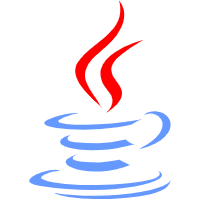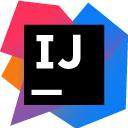实际项目中,一个接口可能需要同时获取多种不同的数据,然后再汇总返回,这种场景还是挺常见的。举个例子:用户请求获取订单信息,可能需要同时获取用户信息、商品详情、物流信息、商品推荐等数据。
如果是串行(按顺序依次执行每个任务)执行的话,接口的响应速度会非常慢。考虑到这些任务之间有大部分都是 无前后顺序关联 的,可以 并行执行 ,就比如说调用获取商品详情的时候,可以同时调用获取物流信息。通过并行执行多个任务的方式,接口的响应速度会得到大幅优化。
对于存在前后调用顺序关系的任务,可以进行任务编排。
- 获取用户信息之后,才能调用商品详情和物流信息接口。
- 成功获取商品详情和物流信息之后,才能调用商品推荐接口。
可能会用到多线程异步任务编排的场景(这里只是举例,数据不一定是一次返回,可能会对接口进行拆分):
- 首页:例如技术社区的首页可能需要同时获取文章推荐列表、广告栏、文章排行榜、热门话题等信息。
- 详情页:例如技术社区的文章详情页可能需要同时获取作者信息、文章详情、文章评论等信息。
- 统计模块:例如技术社区的后台统计模块可能需要同时获取粉丝数汇总、文章数据(阅读量、评论量、收藏量)汇总等信息。
对于 Java 程序来说,Java 8 才被引入的 CompletableFuture 可以帮助我们来做多个任务的编排,功能非常强大。
这篇文章是 CompletableFuture 的简单入门,带大家看看 CompletableFuture 常用的 API。
Future 类是异步思想的典型运用,主要用在一些需要执行耗时任务的场景,避免程序一直原地等待耗时任务执行完成,执行效率太低。具体来说是这样的:当我们执行某一耗时的任务时,可以将这个耗时任务交给一个子线程去异步执行,同时我们可以干点其他事情,不用傻傻等待耗时任务执行完成。等我们的事情干完后,我们再通过 Future 类获取到耗时任务的执行结果。这样一来,程序的执行效率就明显提高了。
这其实就是多线程中经典的 Future 模式,你可以将其看作是一种设计模式,核心思想是异步调用,主要用在多线程领域,并非 Java 语言独有。
在 Java 中,Future 类只是一个泛型接口,位于 java.util.concurrent 包下,其中定义了 5 个方法,主要包括下面这 4 个功能:
- 取消任务;
- 判断任务是否被取消;
- 判断任务是否已经执行完成;
- 获取任务执行结果。
// V 代表了Future执行的任务返回值的类型
public interface Future<V> {
// 取消任务执行
// 成功取消返回 true,否则返回 false
boolean cancel(boolean mayInterruptIfRunning);
// 判断任务是否被取消
boolean isCancelled();
// 判断任务是否已经执行完成
boolean isDone();
// 获取任务执行结果
V get() throws InterruptedException, ExecutionException;
// 指定时间内没有返回计算结果就抛出 TimeOutException 异常
V get(long timeout, TimeUnit unit)
throws InterruptedException, ExecutionException, TimeoutExceptio
}简单理解就是:我有一个任务,提交给了 Future 来处理。任务执行期间我自己可以去做任何想做的事情。并且,在这期间我还可以取消任务以及获取任务的执行状态。一段时间之后,我就可以 Future 那里直接取出任务执行结果。
Future 在实际使用过程中存在一些局限性比如不支持异步任务的编排组合、获取计算结果的 get() 方法为阻塞调用。
Java 8 才被引入CompletableFuture 类可以解决Future 的这些缺陷。CompletableFuture 除了提供了更为好用和强大的 Future 特性之外,还提供了函数式编程、异步任务编排组合(可以将多个异步任务串联起来,组成一个完整的链式调用)等能力。
下面我们来简单看看 CompletableFuture 类的定义。
public class CompletableFuture<T> implements Future<T>, CompletionStage<T> {
}可以看到,CompletableFuture 同时实现了 Future 和 CompletionStage 接口。
CompletionStage 接口描述了一个异步计算的阶段。很多计算可以分成多个阶段或步骤,此时可以通过它将所有步骤组合起来,形成异步计算的流水线。
CompletableFuture 除了提供了更为好用和强大的 Future 特性之外,还提供了函数式编程的能力。
Future 接口有 5 个方法:
boolean cancel(boolean mayInterruptIfRunning):尝试取消执行任务。boolean isCancelled():判断任务是否被取消。boolean isDone():判断任务是否已经被执行完成。get():等待任务执行完成并获取运算结果。get(long timeout, TimeUnit unit):多了一个超时时间。
CompletionStage 接口描述了一个异步计算的阶段。很多计算可以分成多个阶段或步骤,此时可以通过它将所有步骤组合起来,形成异步计算的流水线。
CompletionStage 接口中的方法比较多,CompletableFuture 的函数式能力就是这个接口赋予的。从这个接口的方法参数你就可以发现其大量使用了 Java8 引入的函数式编程。
由于方法众多,所以这里不能一一讲解,下文中我会介绍大部分常见方法的使用。
常见的创建 CompletableFuture 对象的方法如下:
- 通过 new 关键字。
- 基于
CompletableFuture自带的静态工厂方法:runAsync()、supplyAsync()。
通过 new 关键字创建 CompletableFuture 对象这种使用方式可以看作是将 CompletableFuture 当做 Future 来使用。
下面来看一个简单的案例。
我们通过创建了一个结果值类型为 RpcResponse<Object> 的 CompletableFuture,你可以把 resultFuture 看作是异步运算结果的载体。
CompletableFuture<RpcResponse<Object>> resultFuture = new CompletableFuture<>();假设在未来的某个时刻,我们得到了最终的结果。这时,我们可以调用 complete() 方法为其传入结果,这表示 resultFuture 已经被完成了。
// complete() 方法只能调用一次,后续调用将被忽略。
resultFuture.complete(rpcResponse);你可以通过 isDone() 方法来检查是否已经完成。
public boolean isDone() {
return result != null;
}获取异步计算的结果也非常简单,直接调用 get() 方法即可。调用 get() 方法的线程会阻塞直到 CompletableFuture 完成运算。
rpcResponse = completableFuture.get();如果你已经知道计算的结果的话,可以使用静态方法 completedFuture() 来创建 CompletableFuture 。
CompletableFuture<String> future = CompletableFuture.completedFuture("hello!");
assertEquals("hello!", future.get());completedFuture() 方法底层调用的是带参数的 new 方法,只不过,这个方法不对外暴露。
public static <U> CompletableFuture<U> completedFuture(U value) {
return new CompletableFuture<U>((value == null) ? NIL : value);
}这两个方法可以帮助我们封装计算逻辑。
static <U> CompletableFuture<U> supplyAsync(Supplier<U> supplier);
// 使用自定义线程池(推荐)
static <U> CompletableFuture<U> supplyAsync(Supplier<U> supplier, Executor executor);
static CompletableFuture<Void> runAsync(Runnable runnable);
// 使用自定义线程池(推荐)
static CompletableFuture<Void> runAsync(Runnable runnable, Executor executor);runAsync() 方法接受的参数是 Runnable ,这是一个函数式接口,不允许返回值。当你需要异步操作且不关心返回结果的时候可以使用 runAsync() 方法。
@FunctionalInterface
public interface Runnable {
public abstract void run();
}supplyAsync() 方法接受的参数是 Supplier<U> ,这也是一个函数式接口,U 是返回结果值的类型。
@FunctionalInterface
public interface Supplier<T> {
/**
* Gets a result.
*
* @return a result
*/
T get();
}当你需要异步操作且关心返回结果的时候,可以使用 supplyAsync() 方法。
CompletableFuture<Void> future = CompletableFuture.runAsync(() -> System.out.println("hello!"));
future.get();// 输出 "hello!"
CompletableFuture<String> future2 = CompletableFuture.supplyAsync(() -> "hello!");
assertEquals("hello!", future2.get());当我们获取到异步计算的结果之后,还可以对其进行进一步的处理,比较常用的方法有下面几个:
thenApply()thenAccept()thenRun()whenComplete()
thenApply() 方法接受一个 Function 实例,用它来处理结果。
// 沿用上一个任务的线程池
public <U> CompletableFuture<U> thenApply(
Function<? super T,? extends U> fn) {
return uniApplyStage(null, fn);
}
//使用默认的 ForkJoinPool 线程池(不推荐)
public <U> CompletableFuture<U> thenApplyAsync(
Function<? super T,? extends U> fn) {
return uniApplyStage(defaultExecutor(), fn);
}
// 使用自定义线程池(推荐)
public <U> CompletableFuture<U> thenApplyAsync(
Function<? super T,? extends U> fn, Executor executor) {
return uniApplyStage(screenExecutor(executor), fn);
}thenApply() 方法使用示例如下:
CompletableFuture<String> future = CompletableFuture.completedFuture("hello!")
.thenApply(s -> s + "world!");
assertEquals("hello!world!", future.get());
// 这次调用将被忽略。
future.thenApply(s -> s + "nice!");
assertEquals("hello!world!", future.get());你还可以进行 流式调用:
CompletableFuture<String> future = CompletableFuture.completedFuture("hello!")
.thenApply(s -> s + "world!").thenApply(s -> s + "nice!");
assertEquals("hello!world!nice!", future.get());如果你不需要从回调函数中获取返回结果,可以使用 thenAccept() 或者 thenRun()。这两个方法的区别在于 thenRun() 不能访问异步计算的结果。
thenAccept() 方法的参数是 Consumer<? super T> 。
public CompletableFuture<Void> thenAccept(Consumer<? super T> action) {
return uniAcceptStage(null, action);
}
public CompletableFuture<Void> thenAcceptAsync(Consumer<? super T> action) {
return uniAcceptStage(defaultExecutor(), action);
}
public CompletableFuture<Void> thenAcceptAsync(Consumer<? super T> action,
Executor executor) {
return uniAcceptStage(screenExecutor(executor), action);
}顾名思义,Consumer 属于消费型接口,它可以接收 1 个输入对象然后进行“消费”。
@FunctionalInterface
public interface Consumer<T> {
void accept(T t);
default Consumer<T> andThen(Consumer<? super T> after) {
Objects.requireNonNull(after);
return (T t) -> { accept(t); after.accept(t); };
}
}thenRun() 的方法是的参数是 Runnable 。
public CompletableFuture<Void> thenRun(Runnable action) {
return uniRunStage(null, action);
}
public CompletableFuture<Void> thenRunAsync(Runnable action) {
return uniRunStage(defaultExecutor(), action);
}
public CompletableFuture<Void> thenRunAsync(Runnable action,
Executor executor) {
return uniRunStage(screenExecutor(executor), action);
}thenAccept() 和 thenRun() 使用示例如下:
CompletableFuture.completedFuture("hello!")
.thenApply(s -> s + "world!").thenApply(s -> s + "nice!").thenAccept(System.out::println);//hello!world!nice!
CompletableFuture.completedFuture("hello!")
.thenApply(s -> s + "world!").thenApply(s -> s + "nice!").thenRun(() -> System.out.println("hello!"));//hello!whenComplete() 的方法的参数是 BiConsumer<? super T, ? super Throwable> 。
public CompletableFuture<T> whenComplete(
BiConsumer<? super T, ? super Throwable> action) {
return uniWhenCompleteStage(null, action);
}
public CompletableFuture<T> whenCompleteAsync(
BiConsumer<? super T, ? super Throwable> action) {
return uniWhenCompleteStage(defaultExecutor(), action);
}
// 使用自定义线程池(推荐)
public CompletableFuture<T> whenCompleteAsync(
BiConsumer<? super T, ? super Throwable> action, Executor executor) {
return uniWhenCompleteStage(screenExecutor(executor), action);
}相对于 Consumer , BiConsumer 可以接收 2 个输入对象然后进行“消费”。
@FunctionalInterface
public interface BiConsumer<T, U> {
void accept(T t, U u);
default BiConsumer<T, U> andThen(BiConsumer<? super T, ? super U> after) {
Objects.requireNonNull(after);
return (l, r) -> {
accept(l, r);
after.accept(l, r);
};
}
}whenComplete() 使用示例如下:
CompletableFuture<String> future = CompletableFuture.supplyAsync(() -> "hello!")
.whenComplete((res, ex) -> {
// res 代表返回的结果
// ex 的类型为 Throwable ,代表抛出的异常
System.out.println(res);
// 这里没有抛出异常所有为 null
assertNull(ex);
});
assertEquals("hello!", future.get());![图片[1]-Java CompletableFuture 介绍(一)-Java专区论坛-技术-SpringForAll社区](https://spring4all.com/wp-content/themes/zibll/img/thumbnail-lg.svg)







没有回复内容